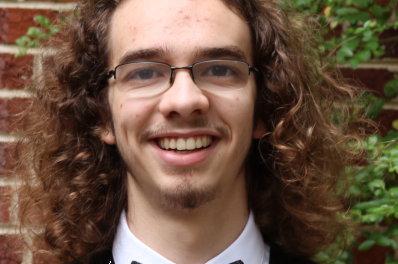The Duke Symphony Orchestra opened its 2005-06 season with an ambitious — perhaps overambitious — program. But, then, they had an illustrious guest artist to match, oboist Joseph Robinson, who retired recently after some 28 years as principal oboist of the New York Philharmonic and is beginning a three-year Artist Residency at Duke.
The Duke Symphony is an enormous orchestra — considerably larger than the NC Symphony — with something like 120 players including 26 first violins. These are not professional players, but rather gifted amateurs most of whom plan careers outside of music. For the preceding two reasons, controlling the orchestra is a complex job, especially in the areas of precision of attack and dynamics. This was the first concert of the season, however, and conductor Harry Davidson, now in his seventh year season at Duke, has successfully wrestled these demons in past years. As with any student orchestra, no matter how talented, there is a 20-30% turnover a year, with the new players having to be integrated into the ensemble. We are eager to see how the orchestra will improve with the subsequent concerts.
The program opened with the Prelude to Wagner’s Die Meistersinger, a deceptively easy work for a large group since Wagner built his own dynamics into the score with small section solos; in the pompous passages, he appears to permit the entire orchestra to cut loose. But there are important gradations of loud and that is where the orchestra needs work.
Then came Robinson, a genuinely nice guy with a lifelong commitment to promoting music in education. Heíd have to be in order to let a student orchestra double dip when heíd only have to play one concerto for a big-league gig. Robinson began with Handel’s Oboe Concerto No.3 in g minor. This is an early work and Handel, as was his wont, reused some of the material in later concertos, so that one often has the feeling of suddenly being time warped into another piece. Robinson, of course, is a superb player with phenomenal breath control for the extended serpentine lines; this concerto is demanding on the soloist who has hardly a momentís rest. His ornamentation was tasteful and appropriate — perhaps more so than that of some of his 18th century counterparts. Davidson used a small chamber ensemble to back him — presumably his best players — who gave an excellent account of themselves.
Then violinist Eric Pritchard, first violinist of the Ciompi Quartet, joined Robinson in Bach’s Concerto in c minor for Oboe and Violin. This concerto was reconstructed from Bach’s Concerto for Two Harpsichords, BWV 1060 in the belief that a work with this instrumentation was the source of the harpsichord concerto. It is a problematic work, because in most performances the oboe simply drowns out the solo violin (There is a reason why a standard orchestra has 20+ violins but only two oboes.) In this performance, however, both soloists clearly knew the score and balanced accordingly. Robinson kept the volume down, even in the lyrical passages where the oboe has the theme so that Pritchardís accompanying arpeggios could still be heard. And Davidson kept the orchestra discreetly in the background so that at least Robinson could be heard in the ripieno passages.
The program ended with Beethoven’s Symphony No.3, “Eroica.” The problems of the orchestra mentioned earlier became more pronounced as this massive work progressed and fatigue set in. Davidson had a good overall concept of the work and mostly kept the various sections in balance. And, talking about oboists, Shelly Rusincovich, the orchestraís principal oboist, played beautifully in what is a very challenging part.











